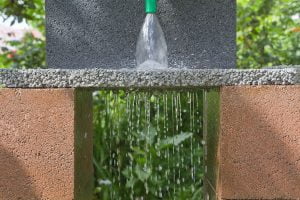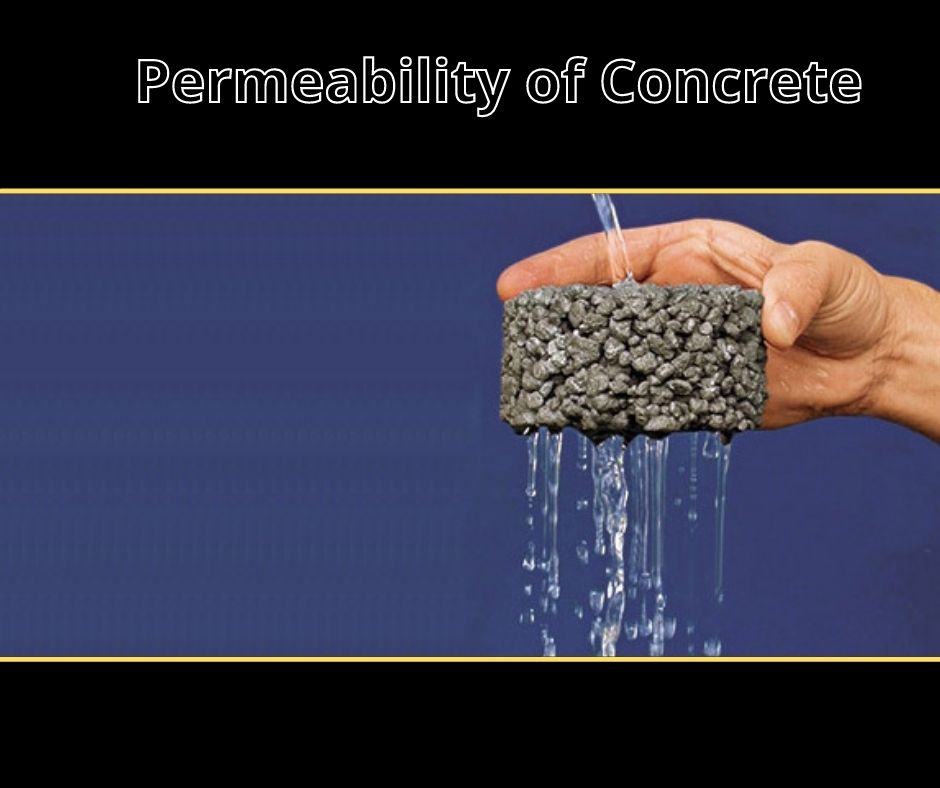Table of Contents
In this article, we will discuss the permeability of concrete.
1. Introduction
Concrete is the composite material that is composed of a mixture of fine and coarse aggregates bonded together with biding material which hardens over time. The binding material mostly includes fluid cement paste, lime putty, lime, etc. In simple language, Concrete is a mixture of cement, sand, aggregates, and water.
The permeability of concrete may be defined as a measure of the quantity of water, air, and other substances that increase through concrete, which is the ability of concrete to withstand the penetration of any material that accesses the concrete matrix, the concrete has voids that can permit these materials to access or depart.
Concrete has tiny voids whose diameter changes from 0.01 to 10 μm in cement pastes whereas it may be between 1 mm to 10 mm when the cement paste is kept on the aggregate.
The commonly utilized methods for testing the permeability of concrete contain water permeability, air permeability, soaking chlorine pools, and electric quantity.

2. Function of Permeability
a. Permeability controls the rate of moisture penetration.
b. Higher permeability will have lower durability.
c. Also, if the permeability is high, the water-tightness will be decreased.
d. If good quality aggregates are utilized then permeability is low.
3. Factors Affecting The Permeability of Concrete
The factors that affect the permeability of concrete are as follows:
a. Cement Content:
It is important to give enough material to prepare impermeable concrete.
The permeability of concrete decreases with the fineness of the cement.
b. Quality of Aggregate:
If best quality aggregates are utilized then permeability is decreased.
If higher porous aggregates are utilized, the permeability of the concrete will increase.
The larger-sized aggregate use also raises the permeability of concrete.
c. Pore structure:
The lowering quantity of paste is advantageous in lowering permeability.
Permeability is very less at and below porosity(η) of 30%.
The porosity of more than 30% will increase the permeability of concrete.
d. Water cement Ratio:
The water mixture is indirectly proportionally responsible for the permeability of the hydrated cement paste.
The loss of water mixture is responsible for the high permeability of concrete.
e. Age of concrete:
As the age of concrete is high, permeability will be low.
f. Degree of Compaction:
The permeability of concrete raises due to incomplete compaction and voids.
It is therefore necessary that concrete should be reasonable and sufficiently compacted.
g. Adequacy of treatment:
The curing will progress the process of hydration, which stays in the pore space making the concrete more impermeable. Concrete is high permeable with steam curing.
4. Importance of Permeability
In reinforced concrete, access to water and air will cause steel erosion causing the concrete to increase in size, crack, and break up.
The access of solute into the solution may highly affect the durability of concrete.
Ca (OH2) leaches and aggressive fluids charge the concrete.
If the concrete set off saturated with water because of permeability, it is additionally vulnerable to frost action.
It is important in the case of liquid retaining structures like water tanks and dams where water tightness is necessary.

5. Measures To Reduce The Permeability of Concrete
To decrease the permeability of concrete, the steps of the following way should be taken as follows:
a. To decrease the permeability of concrete utilizing pozzolana or slag cement should be done.
b. Precast members must be provided preference, plastering should be neglected.
c. Neglect the utilization of pieces of bricks, soft limestone, or other porous aggregates.
d. Increase the cover over rebars.
e. A concrete mixture with a low water/cement ratio will produce concrete with low permeability.
| Read Also: Curing of Concrete |

